| Western Anatolia |
 |
| It was once common for a young woman to make carpets for her groom. And the term
kiz comes from the Turkish word for a girl of marriageable age. Thus, Kiz carpets are not the products of workshops but of a home or village. They are characterized by a double-niche layout, although designs reflect local traditions and vary greatly. |
 |
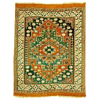 |
 |
Decorative motifs of the classical era distinguish rugs from the area of
Bergama. Typical patterns include the geometric Holbeins, carpets with double niches and prayer rugs with keyhole designs. Stars, rosettes and serrated leaves often decorate the borders. |
 |
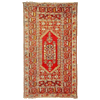 |
 |
The elegant rugs from Ghiordes were among the first Oriental rugs to become popular in the West. Ghiordes prayer rugs are characterized by numerous borders around a small, geometric niche (mihrab). Floral arrangements often are found inside the niche. |
 |
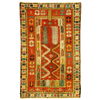 |
 |
Warm colors like gold and brick red are found in the rugs from
Melas. In Melas prayer rugs, the niche often is shaped like an arrowhead and is topped by a light area decorated with flowers. |
 |
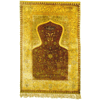 |
 |
Dating from the mid-19th century to the early 20th century,
Hereke is a fairly recent production area. Sometimes made with silk and gold, the refined Hereke rugs employ asymmetrical knots and floral motifs. |
 |
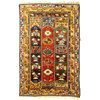 |
 |
The unusual carpets from the Megri area also are known as Rhodes carpets. The
Megri prayer rugs are characterized by long, narrow niches, often in pairs. Design elements often include geometric flowers and trees or octagonal medallions with rosettes. |
 |

